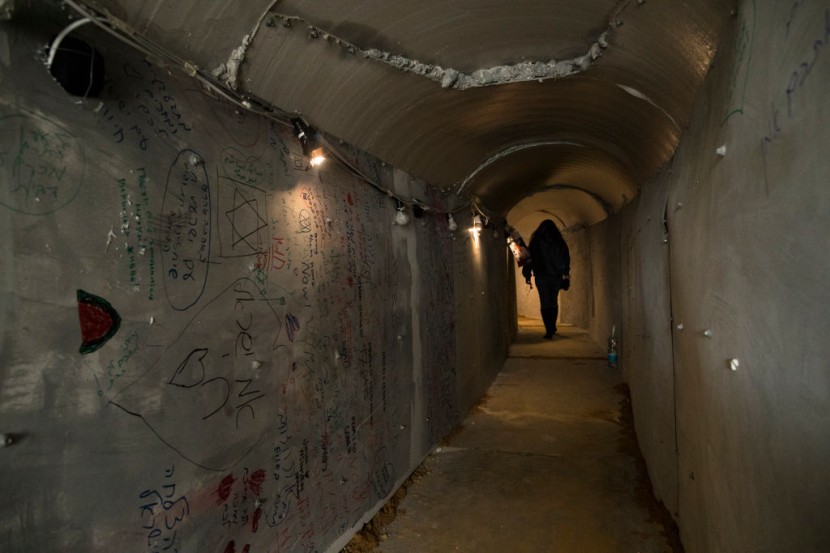On Saturday, Israel's military brought foreign journalists to an area of southern Gaza where its forces had demolished an Islamic cemetery as the military searched for underground Hamas tunnels.
The neighborhood of Bani Suheila in the southern Gaza city of Khan Younis was surrounded by graves excised from the earth and toothless skulls churned rubble.

An Associated Press journalist witnessed the destruction of a mosque where the cemetery had stood, a 140-meter-wide trench that revealed an underground tunnel used by the Hamas militants for its attacks. The military released a video on Monday that showed enormous explosions in the area and claimed that combat engineers had destroyed a portion of the network.
Palestinians and human rights organizations criticized Israel for destroying holy sites during its ground and air campaign in Gaza. Israel also claimed that the offensive was an assault on cultural heritage.
Cemeteries and religious places are protected under international law, and destroying them could be considered a war crime.
Israel said that Hamas uses such sites as military cover, removing them of these protections. It noted that there is no way to achieve its military goal of defeating Hamas without discovering the tunnels where they say the militants have built command and control centers, transported weapons, and hidden some of the 130 captives it is believed to be holding. Furthermore, they claimed that digging up the tunnels involves unavoidable collateral damage to holy spaces.
"We're not naive anymore," Israeli Brig. Gen. Dan Goldfus, who led the journalists around the site, said on Saturday.
Israel has made similar claims in operations in and around Gaza hospitals. According to Goldfus, journalists were taken inside an underground shaft that extended beneath the cemetery and the mosque. The journalists entered a small group of chambers after walking down a long concrete tunnel that branched in multiple directions.
It included three domed rooms with a kitchen with a spice rack and empty cans of beans, a desk-equipped room, and a chamber with four chairs. A military commander reported that the 800-meter-long tunnel was connected to a more extensive network of tunnels in southern Gaza and had a power transformer, fans, wire-connected pipework, and light switches.
The military claimed to have discovered similar warrens of rooms in tunnels all over the Gaza Strip. It alleged the quarters shown to journalists included the office of a Hamas commander, an operations room, and living quarters for senior members of Hamas.
It also noted that the tunnel was used to plan assaults against the military. According to ABC News, the demolished cemetery appears to have been the Shuhadaa Bani Suheila graveyard.
UNESCO Calls Out Hamas, Israel
UNESCO urged Hamas and Israel to refrain from targeting culturally important sites.
The US Commission on International Religious Freedom states that the demolition of graves and mosques may considered a war crime under the Rome Statute, the 1998 treaty that established the International Criminal Court, which grants them special protection as "civilian property."
According to Israel, the sites lose their protection when they are utilized for military purposes and when the operational gain from attacking them outweighs the damage to infrastructure and civilian lives.
Goldfus reported that the forces had discovered additional evidence of Hamas activities in the area, including AK-47s that had been seized and a map of the border between Israel and Gaza that Hamas may have used during the October 7 attack.
© 2025 HNGN, All rights reserved. Do not reproduce without permission.








